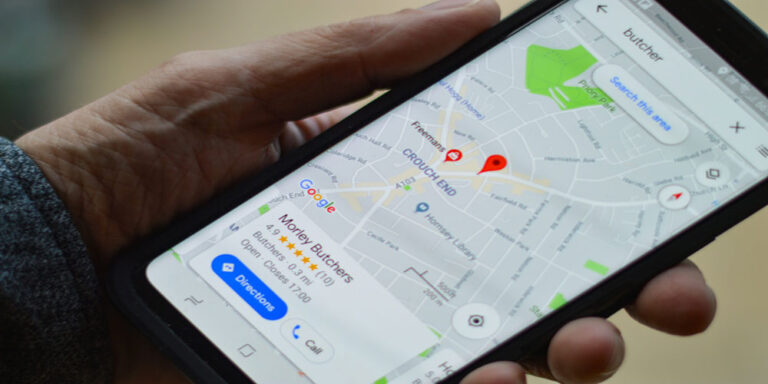
Integrating SEO into Your Traditional Marketing Strategy
Many businesses are relying on online channels to reach their target audience. However, traditional marketing still holds significant value, especially when it’s combined with modern techniques like Search Engine Optimisation (SEO). Integrating SEO into your traditional marketing strategy can amplify your brand’s reach, drive more qualified traffic, and boost your overall return on investment (ROI). This post explores how businesses can successfully blend SEO with traditional marketing efforts to create a powerful, cohesive strategy.
Understanding the Intersection of SEO and Traditional Marketing
Traditional marketing encompasses channels like print ads, television and radio commercials, direct mail, billboards, and event sponsorships. These methods are effective in building brand awareness and reaching a broad audience. However, they lack the precise targeting, measurability, and immediate feedback that digital marketing, particularly SEO, offers.
SEO, on the other hand, focuses on optimising online content to improve its visibility in search engine results. It involves keyword research, content creation, link building, and technical optimisations to ensure that your website ranks high for relevant searches. While SEO is rooted in the digital world, its principles can be extended to enhance the effectiveness of traditional marketing strategies.
1. Leverage Data from Traditional Marketing for SEO
One of the first steps in integrating SEO into your traditional marketing strategy is to use the data and insights gained from traditional campaigns to inform your SEO efforts. For example, if a particular message or theme resonates well with your audience in print or TV ads, consider incorporating similar themes and keywords into your online content.
Traditional marketing campaigns often generate valuable customer feedback through surveys, focus groups, or direct interactions. This feedback can help identify the language and phrases your target audience uses, which can then be incorporated into your keyword research. Understanding how your audience talks about your products or services can lead to more effective SEO strategies, ensuring that your online content aligns with the language and preferences of your potential customers.
2. Optimise Offline Marketing Materials for Online Search
Your offline marketing materials—such as brochures, billboards, and direct mail—can be optimised to support your SEO strategy. For instance, include your website URL, social media handles, and even QR codes on these materials to drive offline customers to your online platforms. Ensure that the landing pages they reach are optimised with relevant keywords and provide a seamless user experience.
Furthermore, consider using branded keywords in your offline marketing campaigns. Branded keywords are search terms that include your brand name or variations of it. By consistently using these terms across both traditional and digital channels, you can increase the likelihood that customers who encounter your brand offline will search for it online using the same terms, driving traffic to your website.
3. Incorporate Local SEO with Traditional Marketing Efforts
Local SEO is crucial for businesses that rely on local customers, such as retail stores, restaurants, or service providers. When running traditional marketing campaigns in specific regions, ensure that your local SEO is aligned with these efforts. For example, if you’re advertising in a local newspaper or on a regional radio station, make sure your Google My Business listing is up-to-date and optimized with local keywords.
Encourage your offline customers to leave online reviews, which are a significant factor in local search rankings. You can include a call to action on your receipts, business cards, or in-store signage, asking satisfied customers to share their experiences online. Positive reviews not only boost your local SEO but also enhance your brand’s credibility and trustworthiness.
4. Use Content from Traditional Marketing in Digital Campaigns
Traditional marketing often involves creating high-quality content, such as video commercials, print ads, or event presentations. This content can be repurposed for your SEO strategy. For example, a television ad can be uploaded to your YouTube channel with an SEO-friendly title, description, and tags. Similarly, print content can be turned into blog posts, infographics, or social media updates, optimised with relevant keywords.
By repurposing traditional marketing content for digital use, you extend its reach and lifespan, maximizing the value of your investment. Additionally, this approach creates a consistent brand message across all channels, reinforcing your marketing efforts.
5. Track and Measure Integrated Campaigns
One of the biggest advantages of integrating SEO with traditional marketing is the ability to track and measure the performance of your campaigns. Traditional marketing often struggles with precise measurement, but by tying it to SEO, you can gain valuable insights into its effectiveness. Use tools like Google Analytics to track website traffic, conversion rates, and user behavior stemming from offline marketing efforts.
For instance, create unique landing pages for different traditional marketing campaigns, and use specific URLs or UTM parameters to track their performance. This allows you to see which campaigns are driving the most traffic and conversions, helping you refine your strategy over time.
A Traditional Marketing Strategy
Integrating SEO into your traditional marketing strategy is a powerful way to enhance the effectiveness of both approaches. By leveraging data from traditional marketing, optimising offline materials for online search, incorporating local SEO, repurposing content, and tracking the performance of integrated campaigns, businesses can create a cohesive marketing strategy that drives results across multiple channels.
The synergy between SEO and traditional marketing not only broadens your reach but also ensures that your brand remains relevant in a rapidly evolving digital landscape. With a well-integrated approach, you can maximise your marketing ROI, connect with your audience on multiple levels, and ultimately, achieve long-term business success.







